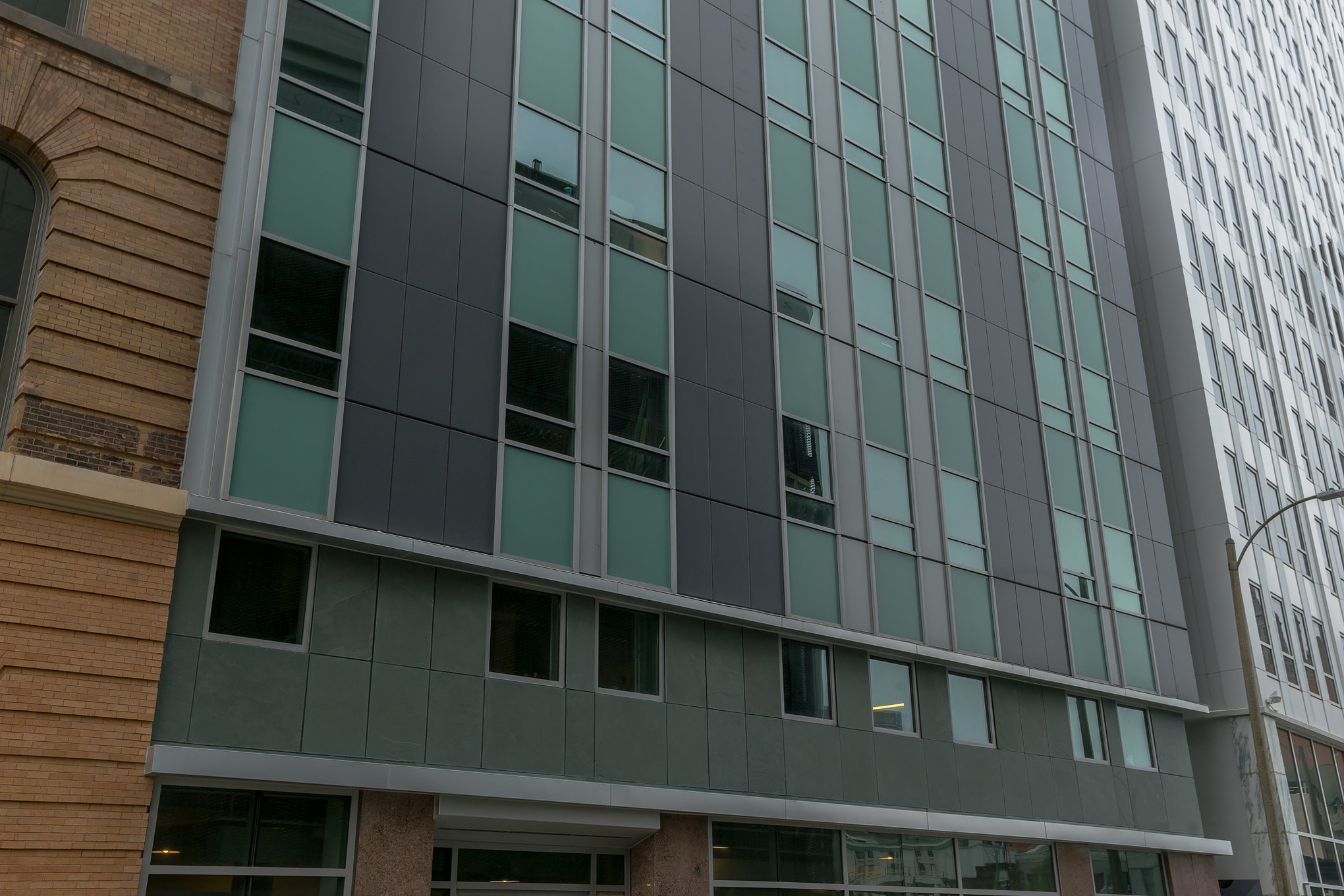3 Simple Techniques For Glass Infill Panels
Table of ContentsLightweight In Fill Panels Can Be Fun For EveryoneSome Known Details About Mapes Insulated Panels Infill Panels For Windows Fundamentals Explained
The outside face of glass, exterior glazing products and also the outer revealed face of light weight aluminum framework feature as a rainfall display, losing water away. In between the outside rain screen and the interior air barrier a pressure-equalization chamber is created in the glazing pocket, which offers to minimize water infiltration by eliminating (equalizing) the pressure difference across the rain screen that tends to compel water right into the system.Water-managed systems show up comparable in the beginning glimpse, incorporating drains as well as weeps from the glazing pocket, but no effort is made to create an air barrier or "zone-glaze" each glass or spandrel system, and also for that reason a bigger quantity of water is pushed into the system and also must be cried away. Likewise, because no air barrier exists, the pressure differential between the glazing pocket and the inside may be solid enough to force water up and down more than indoor gaskets, leading to leakages.
Weeping of water is only a second feature. Note that the simplest way to acknowledge a pressure-equalized rainfall display system is yo note that the that polishing pocket around each individual system of glass is separated air tight from surrounding units, many obviously with plugs or seals at the spaces in between screw splines at mullion junctions.
Some aluminum drape wall systems are still developed as face-sealed barrier walls. They depend on continual as well as excellent seals in between the glass devices and also the frame and in between all framework members to perform. The long-term integrity of such seals is very suspect and such systems must be prevented. Total drape wall thermal efficiency is a function of the polishing infill panel, the frame, construction behind nontransparent (spandrel and also column cover) locations, and the perimeter details.
thermal break) (mapes insulated panels). Aluminum has a very high thermal conductivity. It prevails method to include thermal breaks of reduced conductivity products, commonly PVC, Neoprene rubber, polyurethane and also much more lately polyester-reinforced nylon, for improved thermal performance. Some "poured and debridged" polyurethane thermal breaks diminish as well as worry kinds in the thermal break when the outside light weight aluminum moves in a different way from the indoor light weight aluminum because of temperature level distinctions.
avoid debridging or "t-in-a box"). A true thermal break is" thick minimum and also can be as much as 1" or extra, with the polyester enhanced nylon range. Some drape wall surface systems include separators that are less than ", making them "thermally boosted". The deeper thermal breaks can enhance thermal efficiency and condensation resistance of the system.
Things about In Fill Panels
These systems frequently include gaskets that are positioned between the pressure bar and mullions see as well as feature as thermal breaks as well as assist with acoustic seclusion. These systems need special treatment in design and building to make certain continuity of the gaskets at horizontal as well as upright shifts. Gaskets are likewise made use of to support the glass on the inside and also outside faces of the glass.

There is normally a void in the gasket at the corners after shrinking occurs. With an effectively designed system the water that gets in the system at the gasket corners will weep out through the breeze cover weep holes. To reduce contraction of gaskets back from the edges using vulcanized edges and also diagonally reduced splices are suggested.

As a result of the absence of indoor air adjacent to nontransparent curtain wall surface areas, these areas are subject to broad swings in temperature and humidity and also require mindful outlining of insulation as well as air/vapor barriers to lessen condensation. Some drape wall systems include condensation drain stipulations, such as condensate rain gutters, that are planned to accumulate as well as weep condensate from spandrel areas to the outside; such condensate rain gutters and also weeps are a violation of the air barrier of the curtain wall unless they are outboard of the backpan.
At the curtain wall surface border, keeping connection of the air barrier lowers air flows around the drape wall. Combination of perimeter flashings helps make certain watertight performance of the curtain wall surface and its connection to surrounding wall elements. Proper positioning of insulation at the drape wall border lowers energy loss and also possible condensation issues.

The spandrel area is commonly not warmed, thus the indoor atmosphere does not warm the mullions as well as offset the movement of the cool temperatures deep into the wall. In the vision location the indoor warmth aids to reduce the cold as well as stops condensation. Because see here of this, do not protect Find Out More in between the indoor portion of mullions and surrounding wall building and construction either.
Water can go into the exterior wall system using five various pressures: gravity, kinetic energy, air pressure distinction, surface stress, as well as capillary action. To mitigate water infiltration, every one of these forces must be accounted for in the system design. Unlike alternate windows, which are smaller devices and also can rely to a high level on sill flashings to catch frame edge leakage, curtain wall surfaces cover big expanses of wall surface without sill flashings at each polished opening.
Getting The Mapes Insulated Panels To Work
Leak-proof frame corner building and great glazing pocket drainage are important for dependable water penetration resistance. Trick visual functions of drape wall surfaces are polishing look (see Glazing) and sightlines. Sightlines are specified as the visual account of the upright and straight mullions. lightweight in fill panels. The sightlines are a function of both the size and depth of the drape wall framework.
Where narrow sightlines are preferred, steel stiffeners inserted into the hollow framework of light weight aluminum extrusions can help in reducing framework deepness. The acoustic efficiency of curtain walls is primarily a feature of the glazing and internal seals to quit air leak (covered elsewhere). The audio depletion ability of curtain walls can be boosted by setting up sound undermining infill and also by making building as airtight as feasible.

This can be accomplished by boosting the thickness of one of the lites of glass or by incorporating a laminated layer of glass with a noise-reducing interlayer, normally a polyvinyl butyral or PVB. Back pans are metal sheets, typically aluminum or galvanized steel, that are affixed and sealed to the drape wall surface mounting around the boundary behind nontransparent areas of a curtain wall - infill panel.